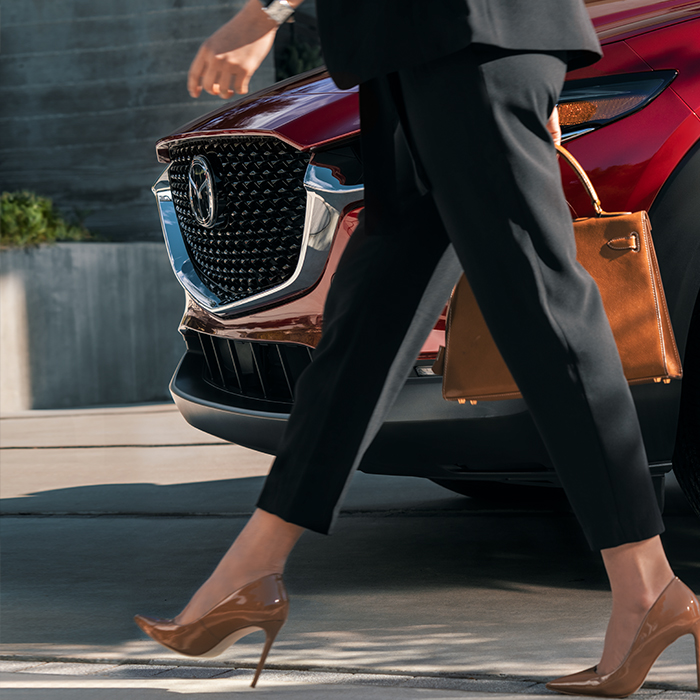Not a problem but just curious. When I am climbing a steep dirt road (and the rear axel is presumably engaged for the steepness) and I encounter kind of a slick wet hole where the left rear tire begins to spin will one of the front wheels also produce drive or can a single rear wheel spin by it self?
You are using an out of date browser. It may not display this or other websites correctly.
You should upgrade or use an alternative browser.
You should upgrade or use an alternative browser.
2020 CX-5 Traction Question
- Thread starter Pitter
- Start date
- :
- 2023 CX-5 2.5 Turbo AWD Auto
RIP 8/23:2013 CX-5 Sport FWD Auto 120k
Here is the best description I could find from an official source. The vehicle controls front and rear power delivery. It can’t send power directly to say the front left or rear right tire. The engine can only supply torque to the front and/or rear wheels. Mazda simulates specific power delivery by applying the brake to the wheel that shouldn’t get extra power, thus it indirectly applies it to the wheel on the opposite side that should.
With traction control on, the braking effect will be subtle. If you turn TCS off and go off-road, the vehicle is more willing to clamp the brake more quickly (say a wheel that’s in the air spinning) so it can deliver power to the wheel that has traction quicker.
 insidemazda.mazdausa.com
insidemazda.mazdausa.com
And for fun here is Mazdas brag sheet about it without providing any specifics lol, ice academy video at the end of the article.

 insidemazda.mazdausa.com
insidemazda.mazdausa.com
With traction control on, the braking effect will be subtle. If you turn TCS off and go off-road, the vehicle is more willing to clamp the brake more quickly (say a wheel that’s in the air spinning) so it can deliver power to the wheel that has traction quicker.
Mazda CX-5 Unlocks ‘Secret’ Off-Road Mode | Mazda USA
Learn about the “off-road” mode in CX-5’s i-Activ AWD system, designed especially for loose surfaces and deeply rutted trails off the beaten path.
And for fun here is Mazdas brag sheet about it without providing any specifics lol, ice academy video at the end of the article.

Mazda USA Official | Cars, SUVs & Crossovers
The official Mazda site to research and shop for all Mazda vehicles. Explore our models, features, photos, specs, build your own, and more on MazdaUSA.com.
The CX-5 (and other CUVs/SUVs) have open differentials. If both front wheels have some traction, both wheels will drive the car forward. The same holds true for the rear wheels.
If you hit a wet, polished ice patch with just one wheel, it will spin, and very little drive force will occur at the other side (L/R) of the car (the power goes into spinning the wheel on ice). When spin is detected, brakes are applied to that wheel, which forces more torque to the other side of the car, which should then drive the car forward.
In almost all driving conditions, you'll never encounter this large disparity in traction. If you do, you have far more concern with not crashing the car.
I drove on lake ice, wet, icy roads, and deep wet snow with Subarus, Audi, Mitsubishi, and Mazda (all AWD systems). The *tires* were the most important part of traction. Go here: https://www.youtube.com/@tyrereviews/videos for that info.
Please ignore the utube 'tests' on spinners.
If you hit a wet, polished ice patch with just one wheel, it will spin, and very little drive force will occur at the other side (L/R) of the car (the power goes into spinning the wheel on ice). When spin is detected, brakes are applied to that wheel, which forces more torque to the other side of the car, which should then drive the car forward.
In almost all driving conditions, you'll never encounter this large disparity in traction. If you do, you have far more concern with not crashing the car.
I drove on lake ice, wet, icy roads, and deep wet snow with Subarus, Audi, Mitsubishi, and Mazda (all AWD systems). The *tires* were the most important part of traction. Go here: https://www.youtube.com/@tyrereviews/videos for that info.
Please ignore the utube 'tests' on spinners.
I agree tires are the most important but some systems work better than others when they encounter slippery conditions on 3 wheels and some really bad when the single tire left with traction is in the rear on these clutch based systems of FWD biased AWD vehicles. Of course usually game over in deep wet snow once you lose ground clearance. Cascade concrete is the worst.
TFL has some fairly good tests on rollers.
The system in my Mazda is very competent but it still doesn’t have the capability of the torsen full time system in my GX. Toyota A-TRAC in their SUVs is also far more aggressive for brake based locking of tire without traction.. granted this is usually for off-road scenarios though.
TFL has some fairly good tests on rollers.
The system in my Mazda is very competent but it still doesn’t have the capability of the torsen full time system in my GX. Toyota A-TRAC in their SUVs is also far more aggressive for brake based locking of tire without traction.. granted this is usually for off-road scenarios though.
New Posts and Comments
- Replies
- 3
- Views
- 125
- Replies
- 19
- Views
- 336
- Replies
- 10K
- Views
- 3M
- Replies
- 1
- Views
- 122
- Replies
- 3
- Views
- 177
